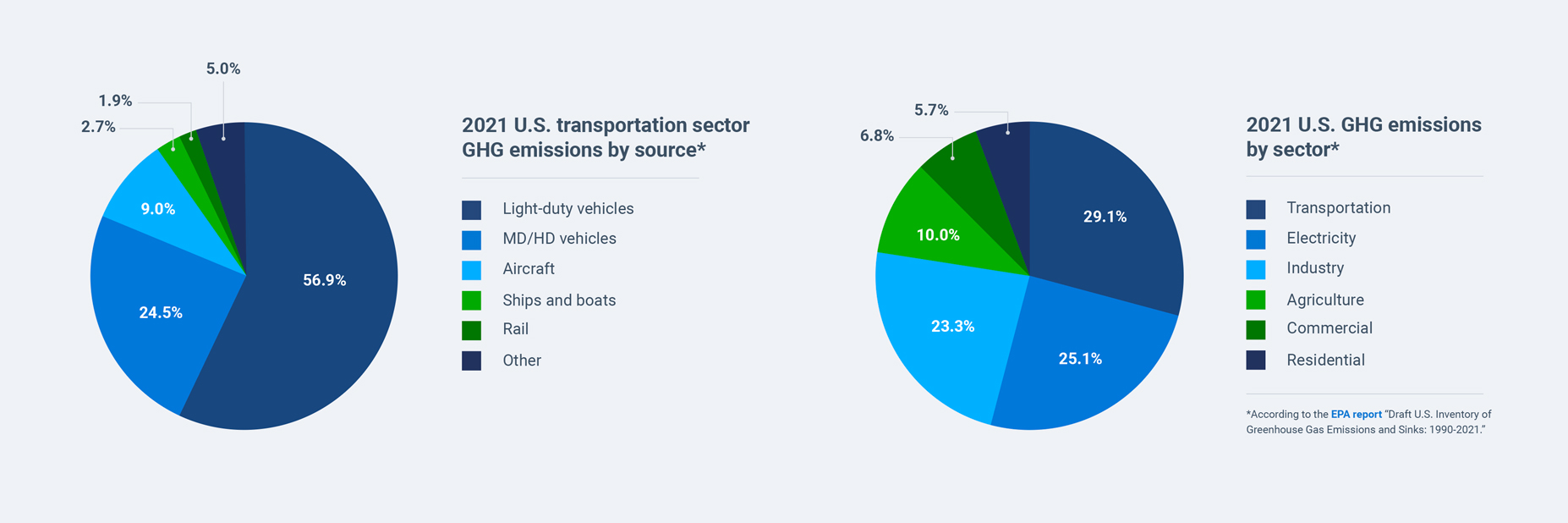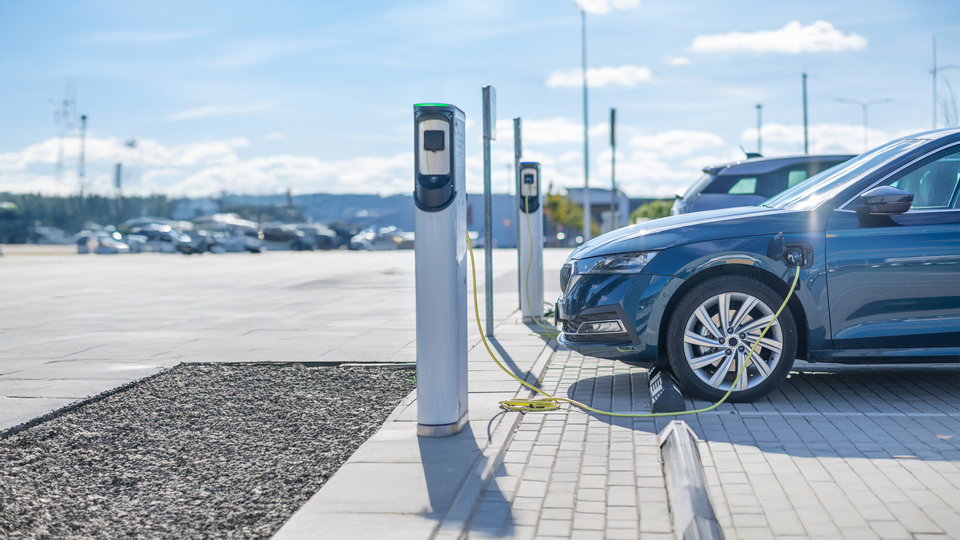Reducing carbon emissions with sustainable fleet management solutions
Discover how sustainable fleet management can reduce your carbon footprint, cut operating costs and improve regulatory compliance.

In March 2023, Simon Stiell, the UN Climate Change Executive Secretary, made a powerful statement: “We’re running out of time but not out of options to address climate change.” As a fleet manager, you hold a unique position to make a significant impact on the environment. The transportation sector is a significant contributor to greenhouse gas emissions, so reducing your fleet's carbon footprint is crucial.
Fortunately, by adopting sustainable fleet management solutions, you can do your part to reduce these carbon emissions while simultaneously improving your bottom line. But where do you begin and what are the different stages of sustainable fleet management?
Why is fleet sustainability important?
Regardless of the size of your fleet, creating a sustainable fleet program is one of the best ways to help reduce your impact on climate change.
Here are some additional figures to consider:
- In 2021, 28% of U.S. greenhouse gas emissions came from transportation, according to the EPA.
- Road transportation represents 81% of these emissions.
- One gallon of gasoline produces around 20 pounds of CO2, meaning the average vehicle emits approximately 6 to 9 tons of CO2 per year.

The statistics speak for themselves and highlight the crucial need for creating a more sustainable fleet.
However, beyond the numbers, there are several other compelling reasons why you should consider embracing sustainable strategies, including:
- Reducing your operational costs by improving your fuel economy
- Modernizing your fleet through electrification and rightsizing
- Remaining compliant with applicable emissions regulations
Despite any hesitation brought on by periods of economic uncertainty, there has never been a more crucial time for businesses to prioritize sustainability.
What are the stages of sustainable fleet management?
A sustainable fleet management strategy is a method of fleet operation that aims to positively impact the environment by improving efficiency. It focuses on improving fuel efficiency, meeting emission reduction targets and reducing operational costs. All of these efforts will fall into four stages: Assess, Adopt, Accelerate and Aspire.
Assess
Before you can take any meaningful action, you need to assess your current situation. You need to gather baseline data for metrics like CO2 emissions, idling times, vehicle utilization and fuel consumption. With this information, you can identify areas for improvement and measure future success. Once you have established these benchmarks, begin evaluating sustainable fleet solutions.
Adopt
The next stage is to begin implementing CO2 emission reduction strategies by focusing efforts where you can make an immediate impact. For example, reducing unnecessary idling is a powerful first move towards sustainability as it can have a significant impact on fuel economy and CO2 emissions. By monitoring idling trends, you can establish the amount of fuel wasted by idling and attribute a cost to it. You then can create policies, including audible alerts through your telematics device, in order to help train your drivers to idle as little as possible.
Another example is to reduce unnecessary travel and increase asset utilization with route optimization. By reviewing your driving data, you might be able to consolidate trips or avoid unnecessary stops, leading to reduced emissions and wasted fuel.
Finally, you can begin exploring fleet electrification. Electric vehicles will be a critical component of any sustainable fleet as they can completely eliminate tailpipe emissions and may also have a lower total cost of ownership (TCO) than a traditional internal combustion engine (ICE) vehicle. Fully integrating EVs into your fleet will take time, but at this stage, you can begin to test the waters through pilot programs. By running an EV Suitability Assessment, you can determine which vehicles in your fleet can go electric and receive replacement recommendations customized for your specific needs.
Accelerate
After tackling some of the low-hanging fruit, it’s time to accelerate your efforts. This means expanding on the sustainability strategies that are already working for your fleet. Once you have a number of EVs in your fleet, you will want to optimize their operation. You can achieve this by monitoring their charging behavior, creating custom alerts that send out notifications if a vehicle isn’t charging when it is supposed to be and making sure that plug-in hybrids (PHEVs) are being run on electricity as much as possible.
Aspire
Creating a more sustainable future for the transportation sector requires leadership, innovation and collective effort from everyone. As a leader, it's crucial to go beyond implementing sustainable strategies in your fleet and actively drive change in your industry by staying informed about the latest trends, advocating for policy changes, fostering a culture of sustainability and exploring new technologies. By taking proactive steps, you can significantly reduce carbon emissions and inspire others to follow suit in creating an environmentally-friendly transportation industry.
The future of sustainable fleets
Adopting sustainable solutions will be essential for the success of any fleet in the near future. As governments begin to take further steps to address climate change there will be a steady increase in regulations and incentives. To stay compliant and avoid potential fines, the time to begin exploring sustainable fleet solutions is now. By getting ahead of the curve, you can avoid any potential costs and disruptions that may come with future regulations.
Sustainability can have significant financial implications as well. Adopting sustainable fleet management solutions can increase efficiency, reducing operating costs and improving your bottom line. In fact, many companies have found that going green has become a competitive advantage, attracting environmentally-conscious customers and investors.
Creating a sustainable fleet will require a calculated effort to integrate these sustainable practices and continuously adapt as new methods become available.
To get started, download our ebook, Driving down emissions: The road to a more sustainable fleet.
Originally published on November 30, 2021
Subscribe to get industry tips and insights
The Geotab Team write about company news.
Table of Contents
Subscribe to get industry tips and insights
Related posts

Field service is losing money to bad data: Go beyond GPS with smarter telematics
June 27, 2025
3 minute read


Enhancing winter road maintenance with postseason materials usage analyses
June 20, 2025
6 minute read

Beat the Heat: Easy Ways to Maximize Your EV Range This Summer
June 19, 2025
2 minute read

Building a self-sustaining school bus driver safety program with Geotab Vitality
June 13, 2025
7 minute read

The impact of unproductive idling on police vehicle service life
June 10, 2025
3 minute read